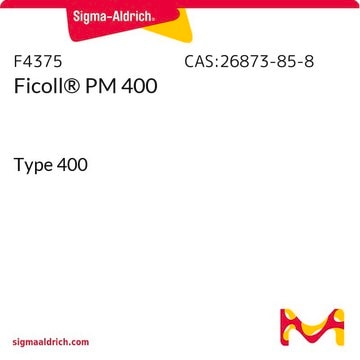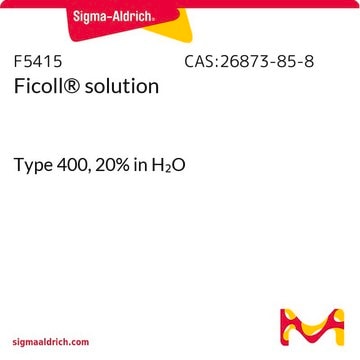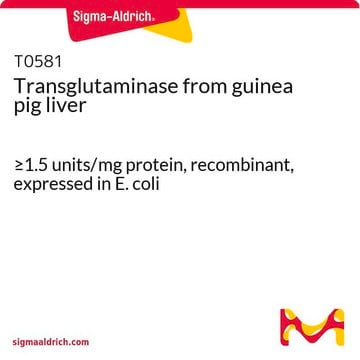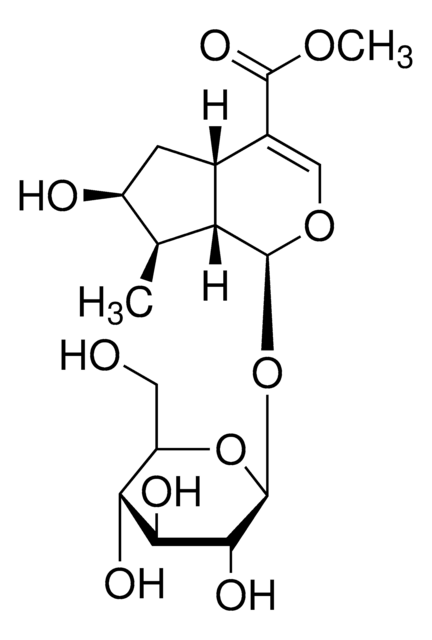G4796
Genipin
≥98% (HPLC), powder, insulin stimulator
Synonym(s):
Methyl (1S,2R,6S)-2-hydroxy-9-(hydroxymethyl)-3-oxabicyclo[4.3.0]nona-4,8-diene-5-carboxylate
About This Item
Recommended Products
product name
Genipin, ≥98% (HPLC), powder
assay
≥98% (HPLC)
form
powder
solubility
DMSO: ≥25 mg/mL
H2O: insoluble
SMILES string
COC(=O)C1=CO[C@@H](O)C2C1CC=C2CO
InChI
1S/C11H14O5/c1-15-10(13)8-5-16-11(14)9-6(4-12)2-3-7(8)9/h2,5,7,9,11-12,14H,3-4H2,1H3/t7-,9-,11-/m1/s1
InChI key
AZKVWQKMDGGDSV-BCMRRPTOSA-N
Looking for similar products? Visit Product Comparison Guide
General description
Application
- in chemosensitivity assay
- in the preparation of recombinant human (rh)-odontogenic ameloblast-associated protein (ODAM) -impregnated collagen gel and in vitro mineralization assay
- in genipin gel preparation
Biochem/physiol Actions
Features and Benefits
signalword
Danger
hcodes
Hazard Classifications
Acute Tox. 3 Oral
Storage Class
6.1C - Combustible acute toxic Cat.3 / toxic compounds or compounds which causing chronic effects
wgk_germany
WGK 3
flash_point_f
Not applicable
flash_point_c
Not applicable
ppe
dust mask type N95 (US), Eyeshields, Faceshields, Gloves
Certificates of Analysis (COA)
Search for Certificates of Analysis (COA) by entering the products Lot/Batch Number. Lot and Batch Numbers can be found on a product’s label following the words ‘Lot’ or ‘Batch’.
Already Own This Product?
Find documentation for the products that you have recently purchased in the Document Library.
Customers Also Viewed
Articles
We offers many products related to InsR for your research needs.
DISCOVER Bioactive Small Molecules for Nitric Oxide & Cell Stress Research
Our team of scientists has experience in all areas of research including Life Science, Material Science, Chemical Synthesis, Chromatography, Analytical and many others.
Contact Technical Service














![1-[3-(Dimethylamino)propyl]-3-ethylcarbodiimide methiodide](/deepweb/assets/sigmaaldrich/product/structures/414/134/4eb9c126-d7f9-4e12-9e3a-95cb077824fd/640/4eb9c126-d7f9-4e12-9e3a-95cb077824fd.png)